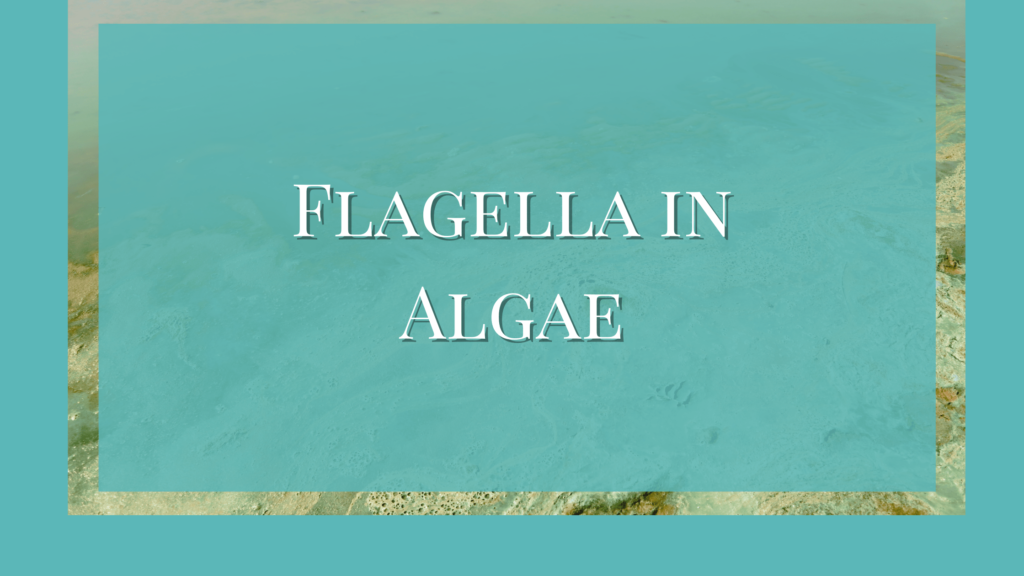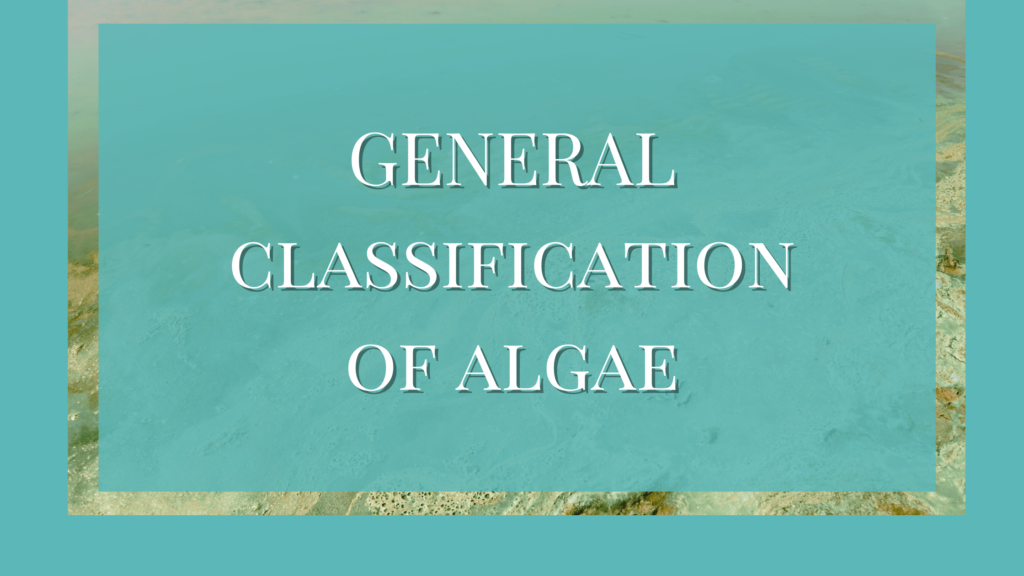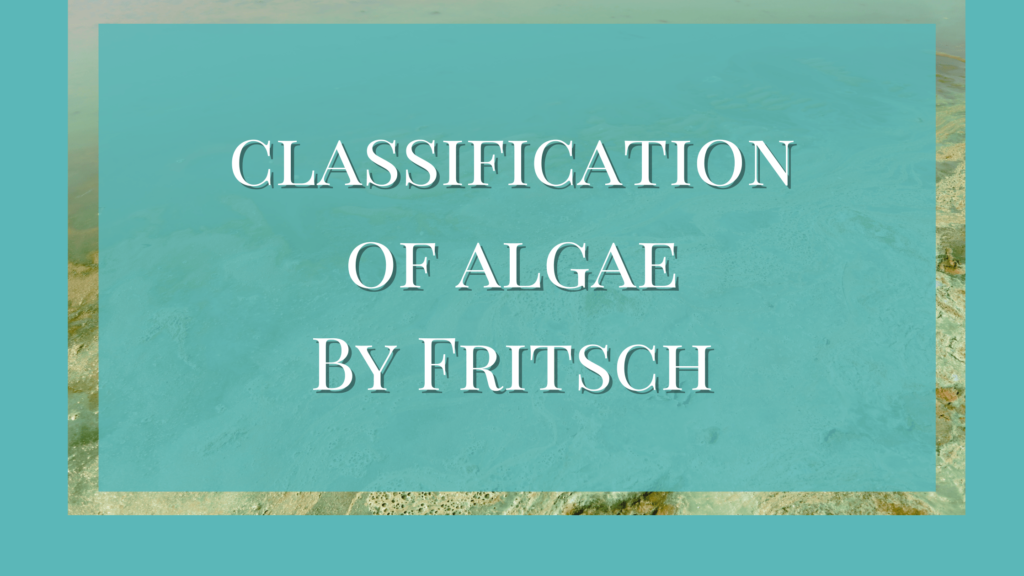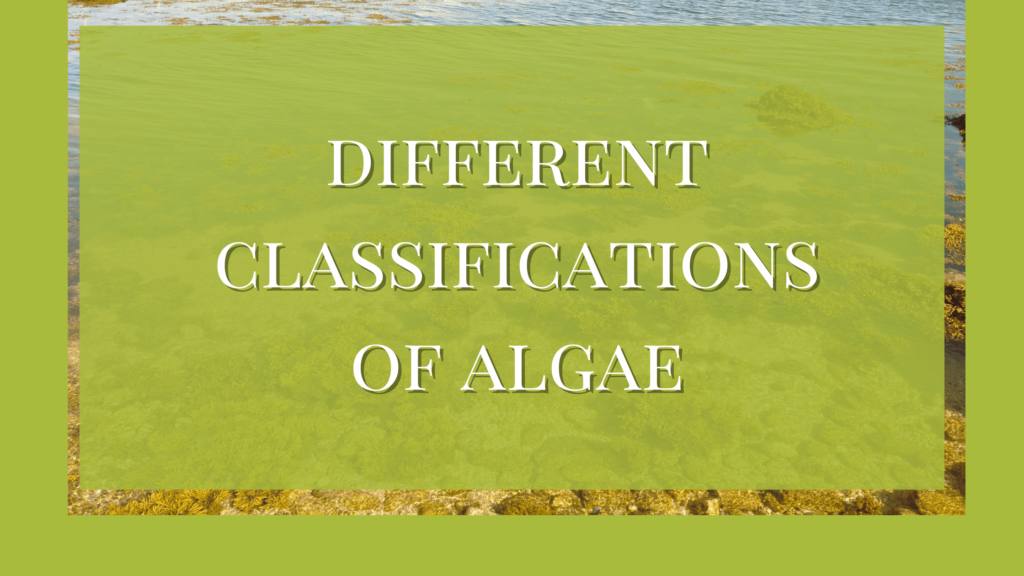Flagella occur in a majority of algal divisions. Mostly, flagella in algae are seen as the protoplasmic whip-like structures in motile cells. The main function of this structure is locomotion which helps with the propulsion of the cell.
These locomotory structures are of fundamental phyletic importance. Despite their remarkable uniformity in internal organization, flagella in algae are highly variable in external morphology, mode of insertion, and root systems. Flagella are considered an integral part of the algal cell structure because
- The membrane of flagella is continuous with the plasmalemma
- The external structures of flagella in algae are derived from the cell that bears them
Origin and Classification of Flagella in Algae
Flagella is one of the major characteristics of algae, especially in some genera. The evolutionary origin of flagella is still conjectural. Some ( Cavalier-Smith, 1978) contend that the flagellar microtubules and their precursors arose with the nucleus while others (Stewart and Matoox, 1981) state that the flagella came first and that the nuclear spindle evolved as an elaboration of the flagellar apparatus or its precursor.
Morphology of Flagella
There is a complex relationship between the morphology of flagella in algae and its function. Within a division, the number of flagella, its organization, and insertion will be consistent. Some flagellar types are based on number and insertion.
Generally, there are two types of flagella in algae- smooth (acronymatic) and hairy (pantonematic). A third type called haptonema is found in Haptophyceae (Prymnesiophyceae).
- When both the flagella in algae are equal in length and appear similar, they are called isokont.
- The term heterokont denotes the presence of dissimilar flagella.
- The presence of similar types with unequal lengths is called anisokont.
The flagellar movement may be coordinated (homodynamic) or independent (heterodynamic).
The flagella in algae such as Oedogonium and Bryopsis (Derbesia stage), arise in a circle in the sub-apical region of the cell and this arrangement is called stephanokont.
Types of Flagella in Algae
Deflanadre recognized four types of flagella in algae.
- Simple flagellum (uniform diameter throughout)
- Acronematic type (smooth whip tapering into a fibril)
- Pleuronematic type (possessing lateral fibrils/mastigonemes)
- Pantonematic- radial distribution of mastigonemes
- Stichonematic – unilateral distribution of mastigonemes
- Pantochromatic type (apiculus and lateral fibrils present)
Structure of flagellum
Flagella are nothing but the emergence of extremely fine protoplasmic extensions. When the cells have a cell wall, the flagella will connect to the inner cytoplasm through small pores on the cell wall.
Flagella usually appear as a single anterior structure or as a pair. The occurrence of more than two flagellums is rare. When two flagella occur, one will move forward and the other backward for the smooth movement of the algae.
Fibrils
- Each peripheral fibril is made of two thin fibrils.
- The two central fibrils are single and lie side by side or have individual sheaths of their own.
- The fibrils are hollow and can extend to the length of the flagellum.
- While the nine peripheral fibrils join at the base to the basal granule, the two central fibrils stop short of the base, to form a 9 (x2) +2 pattern. While there are modifications of this arrangement exist, they are rare as mentioned here.
- 9 (x2) + 0 in spermatozoids of some diatoms.
- 9 (x2) + 1 in green alga Golenkia minutissima
- 9 (x2) + 0 surrounded by three membranes in the haptonema of Prymrnsisophyceae.
- 9 (singles) + 0 in tetrasporalean Chlorophyceae.
However, the organization of the flagellar tip exhibits variation and is a matter of phylogenetic importance. In many, the peripheral doublets terminate below the tip and only the central microtubules extend beyond.
- In Friedmannia isralensis, the microtubule configuration attenuates towards the tip as 9+2 > 4+2 > 2+2 > 0+2.
- In some, the terminal region has an extending single microtubule as hair points.
- Hair points are common in Prymnesiophyceae, Chlorophyceae, and Prasinophyceae.
- In the conventional 9+2 configuration, the tip is normally blunt as in Cryptophyceae, Dinophyceae, Euglenophyceae, some Prasinophyceae, and Charophyceae.
- In the heterokont groups, the hairy flagellum is always blunt except Phaeophyceae (the hairy flagellum terminates as a fine hairpoint while the smooth one possesses a two-stranded hairpoint).
Flagellum basic structure
A flagellum has a basal body and an external axoneme, both of which are contained in the extended plasmalemma. The axoneme terminates in a basal body once it enters the cell.
- Every flagellum has a basal granule called blepharoplast, from which the structure arises.
- The core of the flagellum is the central or axial filament called the axoneme.
- The axoneme is surrounded by a cytoplasmic sheath that extends towards the tip but ends just before the terminal. This naked portion of the axoneme is called the end piece.
- The tip of this end piece can be rounded, blunt, or pointed.
- The cross-section of a flagellum reveals that it consists of two simple fibrils in the center that form the elastic axial thread. This is surrounded by nine thicker protein double fibrils united. They are peripheral contractile in nature. All of these are interconnected by the cytoplasmic extension.
Transitional Zone
Between the axoneme and basal body lies the transition zone. The transitional zone is highly complex and is a useful indicator of phylogenetic relationship. Six types of transitional zones namely Cryptophyceae, Dinophyceae, heterokont, Haptophyceae, Euglenoid, and green algal type have been recognized.
The presence of stellate structures, termination of central tubules, helical structures, fibers on the peripheral tubules called transitional fibers, and addition of a ‘C’ tubule to the peripheral tubules are common features in the transitional zone. The stellate region in the transitional zone appears ‘H’ shaped in the longitudinal section and is united with the flagellar membrane.
Basal body
A flagellum terminates in the basal body within the cell. Distally, it forms the ends of peripheral microtubules. Proximally, the lumen of the basal body contains amorphous material or electron-dense particles.
The amorphous body may contain ribosomes. The base invariably possesses flagellar roots, which are cross-banded microtubular structures. These roots are associated with cell organelles. These fibrous roots are found in Cryptophyceae, Dinophyceae, Raphidophyceae, Chrysophyceae, Xanthophyceae, Euglenophyceae, Prasinophyceae, and Chlorophyceae.
They are variable in size and position, and in some aspects resemble muscle in appearance (probably in function as well). Non-cross-banded roots have been described in some members of Prymnesiophyceae.
The external axoneme grows through elongation. New material is added distally to the nine peripheral pairs of microtubules. The central tubules are extended by the proximal addition of new units. The central tubules are attached to the terminal membrane of the flagellum.
Little is known about the formation and behavior of the flagellar membrane. In many algae, it is smooth, although different ornamentation such as hairs and scales do occur in some. The precise function of these structures concerning flagellar dynamics is uncertain.
Flagellar scales are seen in Prasinophyceae, Charophyceae, and rarely in Cryptophyceae, and Dinophyceae. Flagellar hairs are absent in most Prymnesiophyceae and Chlorophyceae members (flagella naked). Moestrup (1982) grouped the flagellar hairs into two types tubular and simple.
Tubular ones are further divided into cryptophycean hairs, tripartite hairs, and prasinophycean hairs. Some inclusions (normally referred to as paraxial inclusions) and coverings may also occur as in some Chlorophyceae and Prymnesiophyceae.
Flagellation
The actual number of flagella, their position, and the specific type of flagella of algae stay the same for each division but differ from one division to another. Thus, flagella is an important taxonomic factor for algae.
- Both the blue-green algae and red algae lack flagella.
- Green algae and stoneworts are usually motile and have two whiplash flagella at their anterior ends. In rare cases, there may be four such flagella. The exception is Oedogoniales where a crown of flagella appears at the anterior end.
- The yellow-green algae of Xanthophyceae have two heterokonts with one whiplash and one tinsel flagellum each.
- Diatoms in Bacillariophyceae have a single tinsel flagellum only on the male cell.
- In brown algae, only the reproductive cells have a flagellum, which has two unequal flagella (whiplash and tinsel).
References
Chen, Y. T. (1950, September 1). Investigations of the Biology of Peranema trichophorum (Euglenineae). Journal of Cell Science. https://doi.org/10.1242/jcs.s3-91.15.279




